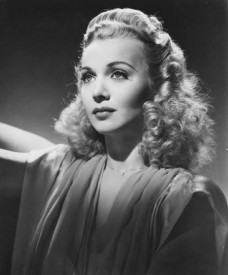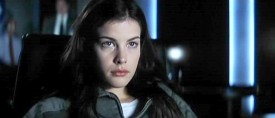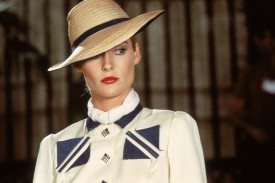
We’ve all seen old movies in which the ladies’ close-ups are shot through a soft focus filter. What may surprise you is that many DPs still do this, only the filters are much subtler. And even if they don’t do this, almost all DPs will light women differently to men. Softer light sources, more flattering key angles and higher levels of fill are some of the typical differences employed in order to beautify an actress. I’ve done it myself.
The question is: is it misogynous?
Women tend to have softer facial features than men. So I could argue that by giving an actress softer lighting than an actor, I’m simply playing to the strengths of their respective physical features. And after all, it’s my job to make everyone look good, male or female. But I know that I’ve often spent longer lighting the leading lady’s CU than the leading man’s, because I’m trying to make it as flattering as possible, and I know that many other DPs do the same. There seems to be a consensus amongst cinematographers that men can be lit more for character, lit appropriately for who they are within the story, whereas women have to be lit primarily for beauty.
John Schwartzman, ASC on the cast of Armageddon: “They’re easy to shoot, easy to light. They’re mainly men. Men, you’re not worried about, ‘Is there a bag or a shadow here?'”

There was understandable outrage about Frozen when head of animation Lino DiSalvo was quoted as saying that the female characters’ facial expressions were more restricted than the men’s because of the need to “keep them pretty”. It’s the same kind of thing. The message here seems to be that it’s more important for women to look good than to have character. Undoubtedly this contributes on some level to the general lack of substance that female characters have in cinema.
This issue must also be seen in the context of the punishing beauty standards which women are held to in our society. Most moviegoers will not think about the lighting and filters that may have been employed to make actresses look better. Many women watching will simply see an image of beauty which society tells them they must aspire to. But they can never reach it, not without a DP following them around everywhere, any more than they can reach the standards of beauty set by Photoshopped magazine covers.
Douglas Slocombe, BSC: “Cameramen have always been obliged to make the leads as beautiful as possible. This can create problems because sometimes the ideal lighting for the actress might mean spilling unwanted light over other parts of the set, compromising the mood you are trying to create. I generally favour mood over actors in wider shots, and then concentrate on the face in the close-ups.”

The standards cut both ways. If all women are pressurised to look beautiful, actresses are doubly so. You have only to look at the casting breakdowns, one of which Rose McGowan called out recently, to see that.
So let’s imagine I ignored beauty concerns and lit an actress purely for character. What might happen? The director and producer, whether male or female, might not be happy. (“Her face is one of our biggest selling points,” I once heard a producer say of her lead actress.) The actress herself may not be happy. Her agent may not be happy. An actress who does not look good onscreen may well find it harder to get work. I don’t think I have the right to subject the actress to these possible negative consequences.
And what about the make-up artist, who probably spent much longer making up the actresses than the actors, and may not get hired again if the actresses don’t look beautiful on camera? Or the colourist, who could track a softening filter to the actress’s face in post without my knowledge or consent? Is there any point in me bucking the system if they don’t too? Would I find it harder to get hired if the women on my showreel didn’t look beautiful?
M. David Mullen, ASC: “The sad truth is that most (not all) women look good with a flat, frontal key light – sometimes soft, sometimes hard. Look at most head shots that actresses carry around – they all look like they have no nose, only two eyes and a smile… There is usually a happy medium where the lighting can look good and dramatically correct and the actress looks good as well – but sometimes I get asked to ‘cross the line’ and glamourize a close-up beyond what is correct for the scene.”

Maybe it’s not my problem? It’s my job to make people look good, but it’s society that tells me what constitutes looking good for a man and for a woman. But of course I’m part of society, and if we all shirk responsibility like that, nothing will ever change. And any situation where a man (92% of DPs are men) has control of how a woman looks is a potential arena for misogyny.
Undoubtedly it’s a grey area, walking the line between character and beauty which no metric can ever define, and perhaps I’m worried about nothing. But since this issue is rarely discussed, I’m very interested to know what people think.